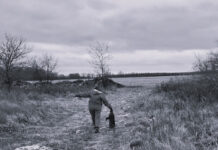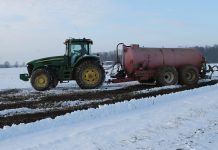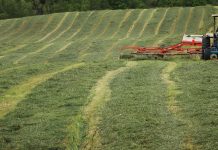Spring is a season of fresh starts. Many people head outdoors to plant gardens, spread mulch or refresh flowerbeds with new blooms. But if you’re looking for something to plant that creates a lasting impact, consider a tree.
Trees are one of the most beneficial additions to any landscape, offering beauty and function while supporting the environment in countless ways.
Supporting the environment
Planting trees helps purify the air, conserve water, reduce energy costs, stabilize soil and provide shelter for wildlife. Deciding what type of tree to plant depends on several factors, including where you live, the type of soil you have and your goals for the planting. In Fulton County, Ohio, we’re fortunate to have a range of tree species that thrive in our climate and soil conditions.
Windbreaks
If you’re hoping to create a windbreak to protect your home or property from strong winds and snow drifts, evergreens are an excellent choice. Species like eastern white pine, Norway spruce and white cedar (also known as arborvitae) are all well-suited for this purpose.
These trees are typically planted as seedlings, and one of the most efficient ways to plant them is with a dibble bar — a tool that helps open a hole in the soil just large enough to accommodate the seedling’s roots. When planting, it’s important to make sure the roots hang straight and don’t get bunched up. In some cases, trimming excessively long roots can help encourage healthier growth and prevent future issues like girdling.
Windbreak trees should be spaced properly to allow for growth and airflow — generally at least 10 feet between trees and 15 feet from any property line.
Shade and ornamental trees. For those interested in adding shade or ornamental value to their yard, larger potted or balled trees are a great option. Trees like red maple and white oak offer both beauty and excellent canopy coverage. River birch and swamp white oak are great choices for wetter areas where drainage might be an issue, while serviceberry and flowering dogwood provide stunning spring blooms and also benefit wildlife.
When planting a potted tree, be sure to dig a hole that is two to three times wider than the container to give the roots space to spread out. The depth should match the height of the root ball.
Once the tree is placed, backfill with the same soil you removed and lightly tamp it down to eliminate air pockets. Applying mulch helps retain moisture and keeps weeds at bay, but always keep mulch a few inches away from the base of the trunk to prevent rot.
Watering
Watering is one of the most critical aspects of tree care, especially during the first year. Newly planted seedlings should receive about 1 gallon of water per week, and this amount should be increased during hot, dry spells. Larger potted or balled trees generally require more water,about 5 gallons, twice a week, to ensure proper root establishment.
The goal is to water deeply and consistently, which encourages roots to grow downward rather than staying near the surface.
Spring is the perfect time to plant trees, and with proper care and attention, your efforts will pay off for years to come. Trees provide shade, beauty and ecological benefits that go far beyond your own backyard.
If you have questions about selecting the right trees or need help with planting techniques, reach out to your local soil and water conservation district. We’re here to help you plant with confidence and grow a greener future for your community.













